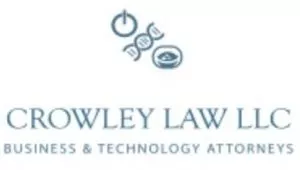- within Corporate/Commercial Law topic(s)
- with Finance and Tax Executives
- in United States
- with readers working within the Healthcare industries

A successful exit is often the moment when your years of risk, sweat and strategy translate into a meaningful return or disappear into someone else's cap table math. The way that exit is structured can shape your next venture, your reputation with investors and the control you have over what comes next. And while many terms affect how a deal plays out, one of the most consequential is the drag-along clause.
What Drag-Along Rights Are and What They Actually Do

Drag-along rights are exactly what they sound like. In their simplest form, they're contractual provisions in your stockholders' agreement that let a majority of stockholders force the minority stockholders to sell their shares when the company is being acquired, on the same terms and at the same price. They show up early, usually tucked into a "standard" term sheet and stay quiet until someone moves to sell.
Picture it: You've built the company. You've gone through the research grind, lined up funding from friends and angels and eventually raised a round from a venture group in life sciences. In exchange, they take preferred stock and ask for a few familiar clauses - among them, a drag-along provision.
Depending on how that clause is structured, it can either help you get a deal across the finish line when a buyer appears or allow investors and majority stockholders to trigger a drag-along sale without your consent. In some cases, you'll be required to join the transaction even if you disagree with the terms or timing.
So yes, drag-along rights are a double-edged sword. And as a founder, you need to know which way the blade is pointing. But first, let's talk about the core elements of drag along rights.
The Core Elements of Drag-Along Rights

Drag-along rights are a legal machine made up of several moving parts, all of which must work together to protect the integrity of your exit. If one piece fails, the entire clause can break down, leaving you exposed to delays, objections or litigation from minority stockholders.
The Trigger Threshold
This is the heartbeat of any drag-along clause. It tells you who has the power to force a sale and under what conditions that power kicks in. Most founders think it's a simple majority vote. It's not. A poorly written clause can hand veto power to one investor without you realizing it, until it's too late.
Which Classes of Stock Are Voting
The first mistake startup founders make is assuming all stock votes the same. In life sciences and other technology companies, your cap table might include Series A, Series B and common stockholders, each with distinct rights baked into your certificate of incorporation.
Failing to name which classes are part of the trigger threshold creates uncertainty. Do Series B investors count? Are common stockholders excluded? Are convertible noteholders entitled to vote once they convert?
A well-drafted drag-along clause will answer:
- Is the clause triggered by preferred stock alone?
- Does common stock participate?
- Is it limited to the lead investor or inclusive of all voting securities?
Leave this vague and you create a power vacuum. One class may think it holds veto rights and another may act without authority.
How the Vote Is Measured
Once you know who gets to vote, the next step is understanding how those votes are counted. Some clauses are measured by shares held on an as-converted basis. Others are calculated by voting power, which may be weighted or capped by class.
In plain terms:
- A preferred stockholder with 100,000 shares may have the right to convert those into 300,000 common shares
- If your agreement uses "as-converted" language, they vote as if they already hold those 300,000 shares
- But if your clause is pegged to voting power, the same investor might only get one vote per share, limiting their influence
This is where dilution protections and super-voting rights also come into play. Some Series B investors might have 10x voting rights on their shares. If your drag-along clause is silent on vote measurement, those rights may tip the balance in their favor.
Are the Classes Voting Together or Separately?
Even if your drag-along provision says "66.67% of outstanding shares" is enough to trigger a drag-along sale, your certificate of incorporation may require separate class approval for key decisions.
That means:
- Series A must approve on its own
- Series B must approve on its own
- Common stockholders may also need to approve independently
This is why the relationship between your drag-along provisions and the protective provisions in your certificate of incorporation must be coordinated up front.
Types of Transactions Covered
Not every sale triggers drag-along rights. And unless you define the scope clearly, you may find yourself in a grey zone with no legal authority to force minority owners to sell. Your clause needs to draw a line in the sand: Which transactions trigger drag and which don't?
Asset Sale vs Stock Sale vs Merger
These are not interchangeable.
- A stock sale transfers ownership of the company's shares to the acquiring company. This is the most straightforward trigger.
- An asset sale means the company sells off all or substantially all of its assets, but the entity itself remains. This can create drag-along confusion unless the clause specifically includes it.
- A merger may combine your company with another or vice versa. If it's not covered, stockholders can refuse to join even if the economic outcome is the same.
Should Secondary Sales Trigger the Drag?
Some founders want drag-along rights to cover any sale, including secondary stock sales by major investors. But if that's not explicitly included, those deals can proceed without minority owners and buyers may avoid them altogether.
If you want to preserve flexibility and buyer confidence, define whether the clause applies to:
- Primary sales only (new shares issued by the company)
- Secondary sales (existing stockholders selling)
- Or both
What About Partial Transactions or Tranches?
Buyers sometimes structure deals in stages, a first tranche now, more later, based on milestones. If your drag-along clause doesn't define how these apply, you may trigger the clause on the first tranche and lose control of the rest.
To avoid misalignment:
- State whether drag applies to sales of a certain percentage of stock or sales of control
- Define what happens if a buyer wants only a majority stake, not 100%
How Drag-Along Rights Help Founders Close the Deal

When structured with founder interests in mind, drag-along rights can help you close the sale, bring everyone to the table and position you to exit your company on your terms. Here's how that clause can work to your advantage when it matters most.
Eliminate Minority Holdout Risk
As your startup matures, your cap table will grow and not everyone listed there will be active, aligned or easy to reach. You might have early common stockholders, quiet advisors or former team members who've moved on. They may hold small percentages, but when it's time to sell, their signatures still matter.
An acquiring company isn't looking for most of your equity. They'll usually ask for full stockholder consent, even from minority owners with no board rights. If just one refuses to sign or demands a different payout, your deal can slow down, shrink or collapse altogether.
Drag-along rights prevent that. Once the majority stockholders, or whatever trigger threshold is defined in your stockholders' agreement, approve the sale, the drag-along clause kicks in. All remaining stockholders are then required to join the transaction, sell their shares on the same terms, for the same price and in the same proportion.
Lock in Deal Terms Efficiently
In many acquisitions involving life sciences and other technology companies, a portion of the sale proceeds is tied to future outcomes. These earnouts are often based on critical development, regulatory or commercial milestones. The acquiring company may agree to pay a larger total price, but only if the company hits those defined triggers.
Everyone involved in negotiating the deal usually walks away with a clear understanding of what was traded - and on what terms. But if your stockholders' agreement doesn't contain strong drag-along rights, minority stockholders who were not in the room can attempt to delay, renegotiate or extract additional value.
Common earnout triggers include:
- Clinical development milestones, such as completion of Phase II or Phase III studies
- Regulatory approvals, including clearance of an Investigational New Drug application or final Food and Drug Administration approval
- Commercial benchmarks, like hitting revenue targets or closing a licensing transaction
Without drag-along provisions, those remaining stockholders may refuse to sign unless they receive a side deal or claim they are entitled to a different payout. A well-drafted drag-along clause prevents that.
Once the majority stockholders approve the sale, all remaining stockholders must join the transaction and sell their shares on the same terms, for the same price and in the same proportion. That stability protects the economic structure of the deal and keeps last-minute surprises from undermining the outcome.
Minimize Legal Risk Post-Closing
Under Delaware law and most U.S. State laws, minority stockholders retain legal rights even if they hold as little as one percent of the company. That includes the right to fair treatment in a sale, access to material disclosures and protection from being excluded from the transaction altogether.
If your cap table includes early common stockholders, former team members, partially vested options or anyone outside your current boardroom, you have litigation risk built in. And if you never provided formal advance notice or clear participation terms, that risk becomes more than theoretical.
A well-drafted drag-along clause limits those threats by locking in the deal's mechanics ahead of time. Once a defined vote threshold is met, all stockholders are required to participate in the transaction on the same terms, for the same price and in the same proportion.
The clause should clearly state what type of sale can trigger drag-along rights, how many votes are required to activate it and what the remaining stockholders must do once it is triggered. When the clause includes advance notice and waives post-closing objections, it places the company in the best position to avoid claims of breach, exclusion or unfair treatment after the fact.
Where Things Go Wrong: When Founders Get Dragged

Drag-along rights are a double-edged sword. And depending on how your stockholders' agreement is structured, the blade may be aimed squarely at you. These clauses can be triggered in several ways and not all of them involve your vote, your consent or your control.
All Shares Voting as One Class
This is the most straightforward and rarest structure. It treats every stockholder equally, regardless of class. Everyone votes together, with one share equaling one vote, on an as-converted basis. If you own 20 percent of the company, your vote counts as 20 percent.
In practice, this kind of structure is clean and founder-friendly. But it often disappears by the time a company raises a priced round. Institutional investors typically insist on protective provisions and class-specific rights to safeguard timelines and return profiles.
Majority of Preferred Only
This is the most common drag-along trigger in life sciences and the one most likely to cut founders out of the process entirely. If your stockholders' agreement gives control to the preferred class, you may not have a vote, a veto or even a seat at the table when the sale is approved.
Founders often assume they'll be part of that decision. But here's how it really works: If the clause allows a simple majority of preferred stockholders to trigger the drag and those investors collectively hold 51 percent of that class, the sale can be approved and executed without your consent, even if you still hold 30 percent of the company in common stock.
Series-Specific Trigger
Every priced round adds a new class of preferred stock: Series A, Series B and so on. Each class comes with distinct rights and in many deals, a drag-along clause gives one of those classes sole authority to approve a sale. That's where things get lopsided. If your stockholders' agreement lets just the Series A preferred trigger a drag-along sale, you could be bound to a transaction you didn't negotiate, approve or even know was coming.
Investors aim for specific return timelines tied to clinical milestones. If Series A is sitting on 51 percent of its own class and the clause allows that class to act alone, they can trigger the drag and pull every other class, including yours, into the sale.
Board-Triggered With Drag
Some stockholders' agreements don't require a vote of the stockholders at all. Instead, the clause says that if the board approves a "Qualified Sale" and a majority of the preferred stockholders support it, then drag-along rights apply and every stockholder must sell.
At first glance, this may feel like a balanced safeguard. In reality, it's one of the most lopsided structures a founder can face. If you hold one board seat and the rest are filled by investor representatives or independents aligned with them, you have already lost the vote before it starts. If the clause gives the preferred stock alone the right to approve the drag, that's a second veto-proof trigger you don't control. In combination, those two triggers leave you with no meaningful say in whether a deal moves forward.
Conclusion
The impact of a drag-along sale depends entirely on how the clause is drafted, who holds the trigger and what protections are built in for the remaining stockholders. At Crowley Law LLC, we help founders at every stage of the startup lifecycle structure stockholders' agreements that reflect their vision, protect their stake and align with their timeline. Whether you're negotiating your first priced round or preparing for a strategic acquisition, we place you in the best position to participate in the outcome without being dragged along blindly. Call us today at 908-738-9398.
This article is for informational purposes only and does not constitute legal advice. You should consult qualified legal counsel regarding your specific situation.
FAQs
What's the Difference Between a Drag-Along Right and a Tag-Along Right?
Drag-along forces minority holders to sell when the majority agrees to a sale. Tag-along gives minority holders the right to sell if majority holders do, but not the obligation. Founders should understand both, especially when negotiating early term sheets.
Can Drag-Along Rights Override My Protective Provisions or Board Seat?
Yes, if the drag clause is stronger or coordinated poorly. Some agreements give the board the power to approve a sale without founder consent, then trigger drag with a simple majority of preferred stock. That double trigger bypasses your protective provisions and your board influence entirely.
Can I Negotiate Founder Carveouts Even in a Drag-Along Sale?
Yes, but only before the drag is triggered. These must be negotiated and documented upfront, typically through management retention agreements, accelerated vesting or specific carveout terms. Once the drag kicks in, you're locked into uniform terms.
Can a Drag-Along Clause Force Me to Accept an Earnout I Don't Agree With?
Absolutely. If the drag-along is triggered and you're not protected, you're required to accept the same terms as the rest of the stockholders, including deferred payments, milestone-dependent earnouts or escrow holdbacks.
Are Secondary Sales by Investors Covered by Drag-Along Rights?
Only if explicitly included. Many clauses cover only a "Company Sale," meaning primary transactions. If you want to control how major stockholders exit (or avoid being dragged along during a fund rotation), the clause must define "sale" to include secondary transfers.
What Happens if a Stockholder Refuses to Comply With a Drag-Along Clause?
Strong drag clauses include irrevocable proxies and power of attorney provisions that allow the company to enforce the sale without additional signatures. If yours lacks this language, holdouts can delay or derail the deal.
The content of this article is intended to provide a general guide to the subject matter. Specialist advice should be sought about your specific circumstances.


